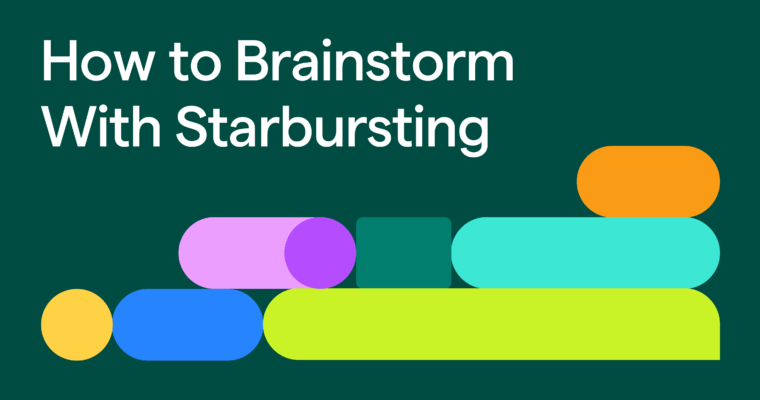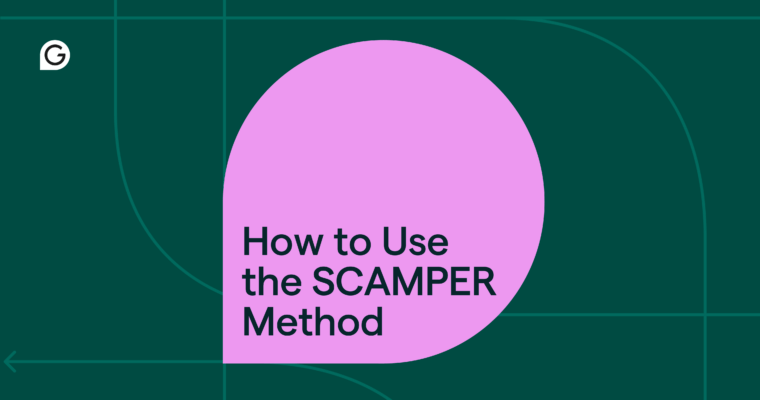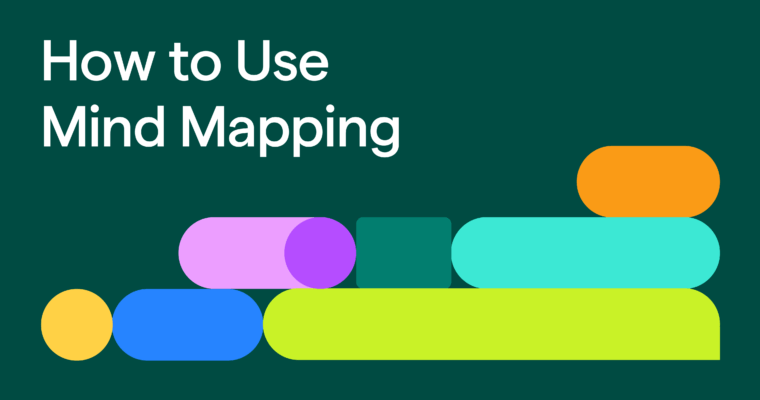
Key takeaways
- Starbursting is a brainstorming method that focuses on asking questions, not generating answers.
- It uses six key prompts: Who, What, Where, When, Why, and How.
- This method helps writers, teams, and creatives uncover gaps in their ideas before drafting or planning.
- Starbursting is especially effective in the early stages of a project, when clarity matters more than solutions.
You have an idea, but it feels like something is missing. Maybe your outline looks thin, your argument lacks focus, or your team jumps straight into writing without first asking the right questions. When that happens, it helps to pause and explore what you don’t know yet.
That’s where starbursting comes in. Unlike traditional brainstorming, which emphasizes idea generation, starbursting emphasizes curiosity. Instead of racing toward answers, you identify every question worth asking about your audience, purpose, scope, and timing.
Writers use this method to shape stronger outlines and avoid writing from assumptions instead of from ideas they can support with evidence. Teams use it to clarify goals, roles, and readers before they write. The result is sharper, more strategic content built on understanding, not guesswork.
Table of contents
- What is starbursting?
- Why use starbursting?
- How to use starbursting step by step
- Starbursting examples
- Starbursting vs. other brainstorming methods
- Best practices for starbursting
- Common mistakes to avoid
- How Grammarly can help with starbursting
- Starbursting FAQs
What is starbursting?
Starbursting is a structured brainstorming technique that uses questions to explore every facet of an idea. With starbursting, you start by writing your central topic in the middle of a page, then radiate six lines outward from it. At the end of each of these lines, write the following:
- Who
- What
- Where
- When
- Why
- How
Unlike traditional brainstorming, which focuses on generating ideas, starbursting is about discovery. You identify all the places in your plan that need clarification so you can find solutions. This approach is especially helpful in writing and prewriting, where understanding a piece’s purpose and audience early on can contribute to its success.
Originating in creative and product development circles, starbursting is widely used by educators, marketers, and writers. For a writer, the diagram might look like this:
- Who is the target audience?
- What is the main message or theme?
- Where will it be published or shared?
- When is it most relevant?
- Why should the reader care?
- How will I support my argument or story?
This question-first mindset encourages engaging in deliberate, complete thinking before writing.
Why use starbursting?
Starbursting’s focus on questioning makes it one of the most valuable brainstorming tools for writers and creative teams. Here are five key ways it can make a brainstorming session more productive:
Surfaces overlooked questions
Starbursting prompts you to ask questions you might otherwise ignore.
Example: A writer outlining a long-form article asks, “Why should readers trust this content?” The answer pushes the writer to add expert sources and data.
Try brainstorming with AI to expand these questions even further.
Builds critical thinking and perspective
By asking structured questions, writers explore multiple viewpoints. They also understand how these viewpoints intersect.
Example: A team developing a guide for freelancers asks, “Where might readers drop off?” This results in the team reordering the guide’s sections for greater clarity.
Thinking outside the box happens when writers use starbursting. Starbursting can turn assumptions into curiosity, which then reveals logical gaps and fresh perspectives.
Helps analyze projects before execution
Starbursting clarifies a piece of writing’s logistics and priorities before you start writing it.
Example: Before drafting a white paper, a content strategist asks, “Who’s the decision-maker?” and “When will this be distributed?”
The answers inform the white paper’s tone and when it’s released.
Supports remote and asynchronous teams
Because starbursting questions can be shared in a document or board, the technique is ideal for distributed collaboration.
Example: Writers across time zones add to a shared starburst diagram, asking “How will we measure success?” and “Where should we promote this piece?”
Reduces assumption-based writing
Starbursting helps writers move from vague goals to evidence-backed plans.
Example: Instead of assuming “we’ll post on social media,” a team asks, “Where does our audience spend time?” and “Why would they engage here?”
By uncovering realistic answers, the writer makes it possible to reach data-driven decisions.
How to use starbursting step by step
Follow these steps to run a starbursting session that produces useful, actionable questions:
Step 1: Define the central idea or challenge
Write your main topic or problem in the center of the diagram. Keep it specific. This helps focus the session and prevent vague questioning. It’s especially helpful for breaking through writer’s block.
Example: “Freelance Writer Success Guide”
Step 2: Draw your star diagram
Create a star-shaped diagram with six arms labeled Who, What, Where, When, Why, and How. You can draw this on paper or a whiteboard or use a digital tool.
Example: In a shared digital tool, a team builds out the question “Who is the ideal reader for this guide?”
Step 3: Brainstorm questions under each category
Generate as many questions as possible without worrying about answers. This encourages open-ended thinking and prevents participants from evaluating the questions too early in the process.
Example: Under Why, ask, “Why will readers trust us?” Under How, ask, “How will we share the guide with our audience?”
Step 4: Expand collaboratively
Invite participants to add new questions or refine existing ones. This brings fresh perspectives into the conversation and reduces the chance of overlooking important viewpoints.
Example: A teammate adds, “Who funds this content?” or “Who influences purchasing decisions?”
Step 5: Prioritize and answer the key questions
With clear answers to all the questions, select the most important questions to focus on as you outline the piece.
Example: A team chooses the top five questions to guide their outline. Each one becomes a section heading.
Starbursting examples
Academic example
Scenario: A graduate student is planning a research paper on changing definitions of digital literacy as the academic landscape evolves.
Starbursting in action: The student places “Digital Literacy in the 2020s” in the center and asks, “What constitutes digital literacy?” and “Why does digital literacy matter in academics?”
Outcome: They identify clear research questions and refine their scope early, saving time during drafting.
Professional example
Scenario: A marketing team is preparing a white paper on small business growth in the B2B printing space.
Starbursting in action: They ask, “Who is the buyer?” “Which metrics matter most?” and “When should a new B2B printing business launch?”
Outcome: The team produces a focused, data-driven outline with defined audience segments.
Creative example
Scenario: A novelist is developing a comedic time-travel story.
Starbursting in action: They ask, “Why does time travel matter?” and “Where does the story begin?”
Outcome: The questions reveal stronger character motivations and plot twists.
Starbursting vs. other brainstorming methods
Starbursting fits alongside other brainstorming methods as a foundational tool for the early ideation stage.
| Method | Goal | Pros and cons | Comparison |
| Traditional brainstorming | Generate as many ideas or solutions as possible. | Pro: Fast and dynamic
Con: May skip crucial questions |
Starbursting slows the pace and focuses on exploration before execution. |
| Mind mapping | Expand related ideas visually around a central theme. | Pro: Great for connecting subtopics
Con: Can become cluttered |
Starbursting provides structure through question categories, making it clearer for identifying unknowns. You can combine both or use mind mapping as one of several brainstorming tools. |
| Brainwriting | Encourage silent, written idea generation. | Pro: Promotes equal participation
Con: Focuses on answers, not questions |
Brainwriting produces ideas; starbursting uncovers what you still need to ask before drafting. |
Best practices for starbursting
Here are six tips you can use to get the most out of your next starbursting session:
- Start with a clear writing challenge. With a focused topic, you’re able to ask more relevant questions.
- Delay finding solutions. Prioritize curiosity first, then work toward finding conclusions. With a curiosity-first mindset, you’re positioned to explore the topic deeper.
- Use “What if?” and “Why not?” These prompts uncover new angles you can explore in your writing.
- Include diverse participants. Invite editors, designers, and marketers to add perspective to your project. The most helpful participants depend on the nature of your project.
- Capture everything. Use a shared doc or whiteboard so no question is lost.
- Review your list before writing. The top questions you identify will shape your outline and improve clarity in your writing.
Common mistakes to avoid
As you work through a starbursting session, be careful to avoid the following pitfalls:
- Jumping to answers too soon. Focus only on asking at first.
- Asking only surface-level questions. Dig deeper into why and how.
- Not connecting with collaborators. More participants lead to richer insights.
- Doing only one session. Revisit questions as your draft evolves.
- Failing to document your questions and their answers. Always record your questions in a shared space.
How Grammarly can help with starbursting
Starbursting helps you uncover the right questions to ask, explore, and answer in your writing. Grammarly helps you turn those answers into strong prose that connects with your audience.
- Use Grammarly to clarify your core idea before you begin your session.
- Capture your questions in a collaborative doc and let Grammarly refine tone and clarity.
- Test whether your content addresses the topic completely with Expert Review.
Grammarly supports you through every stage of the writing process, helping you move confidently from questions to answers and from rough ideas to clear, engaging writing.
Starbursting FAQs
What is the purpose of starbursting?
It helps writers and teams explore every question related to a topic before drafting, reducing gaps and weak assumptions.
Is starbursting better than traditional brainstorming?
Whether starbursting or traditional brainstorming is better depends on your goal. Use starbursting when you need to explore a topic deeply; use traditional brainstorming when you need to generate solutions quickly.
Can starbursting be used alone?
Yes. Solo writers can create diagrams and use the questions to plan outlines or arguments to explore.
How is starbursting different from mind mapping or brainwriting?
Mind mapping explores associations, brainwriting collects ideas, and starbursting uses structured questioning to guide exploration.
What are examples of starbursting for writers?
A journalist planning a feature might ask, “Who is affected?” “What’s new here?” “Why does it matter?” and “How can I verify the data?” The answers shape their reporting plan. Similarly, a novelist might ask questions like “Who is the most interesting character?” “What motivates this character to take action?” “Why does the antagonist stand against this protagonist?” and “How does the protagonist resolve the






